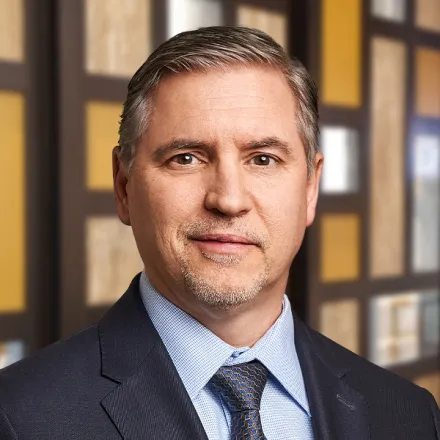
Understanding how much income you’ll need in retirement
“Will I have enough to retire?” That question has become a real challenge to answer. We’re living longer. Stock markets swing up and down. Interest rates also rise and fall – and then again. Failing to take the right steps could end up costing you the retirement you want.
While a big-picture plan guides your vision, retirement planning requires constant adjustments. Could your plan use a simple tweak or should you hit the reset button? It’s never too early to make sure you’re on track.
What’s your number?
There’s no one-size-fits-all answer to the question of how much is enough. Most experts agree you’ll have to replace 60% to 70% of your working income in retirement to maintain your lifestyle, but that’s only a starting point. Your figure could be lower or much higher depending on factors like your life expectancy, health, future spending habits, and any legacy you wish to leave to your family or charity.
While pensions will help, building your own nest egg to support your retirement lifestyle is essential. But knowing how large your pot of savings should be? That’s the tricky part.
Will you retire later, or sooner?
It’s no secret Canadians are living longer than they were just a few generations ago. Someone turning 65 can expect another 20 years of life. And that’s only the average. Half will live longer still.
A “traditional” retirement age presents enough challenges for your savings. If you plan to stop work early, the pressure builds. You face the double risk of having to fund a potentially longer retirement while shrinking the number of years you have available to save. And, if there’s a gap between the date you retire and the date your pension starts, there can be a substantial hole to fill in your income.
That said, holding off on retirement, even a few years, can do the opposite, giving your money extra time to grow while shortening the period you’ll need to fund. It’s easier to reach your goals, giving you the luxury of saving less or investing more conservatively.
The bottom line is if you’re flexible about when you retire, your options for investing and future lifestyle broaden considerably.

Getting a handle on your retirement cash flow
The better you understand what your cash flow in retirement will look like, the simpler it is to determine how much you need to save.
Spending – what goes away, what increases
Your chosen lifestyle will drive your expenses in retirement. Travelling the world will take considerably more cash than puttering away in the garden.
Look for some costs to decline once you leave work. For example, you’ll be swapping the cost of suits and business attire for casual wear. Gone will be CPP and EI deductions. Another plus? You’ll no longer be committing cash to building your retirement savings.
At the same time other costs are likely to ramp up as you age. Prepare to spend more – perhaps much more – on health care. Then there’s the cost of enjoying new pursuits or paying someone else to do those tasks around the house you once did yourself.
As you project your expenses, don’t ignore the impact of inflation. Even modest increases in the cost of living can eat away at your retirement income. Just 3% annual inflation, the Canadian average over the past century, will chop your purchasing power in half over the course of a typical retirement.
Assessing your income sources
Most working Canadians have three pillars of retirement income. The first two are pensions: government and employer.
As of 2021, Old Age Security and Canada Pension Plan benefits will collectively pay you a maximum of just over $1,800 per month, or a little less than $22,000 per year, assuming you retire at 65. These benefits are typically adjusted annually for inflation. You have the option of taking CPP as early as age 60, but be prepared to give back as much as 36% of your monthly payments if you do so.
Keep in mind the OAS “clawback” kicks in if your net income exceeds $79,845. That’s why it’s important to make tax strategy part of your retirement income conversation.
Employer pensions? They’re not created equal. Generally, you’re in a more stable position with a defined benefit plan (DB).
Under a DB plan, your employer guarantees you a stream of income for life, calculated on your years of service and a salary factor (based on career average, best five years, or other metric). If you’re fortunate enough to have one, a generous DB plan can provide a significant percentage of the retirement income you will need.
However, increasingly common are defined contribution (DC) plans. With the DC plan, only the amount you contribute is defined. Your pension savings will be made up of your accumulated contributions and the growth in your plan. Your benefit will depend on how well you manage those retirement assets.
If you invest poorly, you could outlive your assets. This means you have to factor in greater uncertainty over your future income with a DC plan compared to a DB pension.
Either way, your advisor can help you estimate how much income you might reasonably expect from your employer pension and identify the risks to those projections.

The final pillar is your personal savings, including RRSPs, TFSAs, and non-registered accounts.ᶲ Spend the income generated by investments in those accounts or draw on the capital. You may also have income from a business or rental property to support you.
Ultimately, your private sources must fund the difference between your pensions and your expenses – and do so for as long as you live.
Managing your asset mix
If you’re 15 years or more away from retirement, you can afford to be aggressive when investing your retirement savings. You still have time to benefit from the equity market’s capital and dividend-producing potential. Market volatility can work to your advantage. Any dip represents a buying opportunity.
Assuming you’re 50 years old, even a 2% boost in your portfolio’s annual return can add 33% more to your nest egg by the time you’re 65, making it much easier to save each month for your retirement goals. At this stage you can let your portfolio do the heavy lifting.
When you’re 10 years from retirement, things start to change. Your investments have less time to recover if markets drop. It may be prudent to dial down the risk in your portfolio in favour of more fixed income and guaranteed investments.
Think about creating a safety net, namely a bucket of short-term and liquid investments, to sustain your living expenses should you retire just as a bear market hits. Having to immediately draw from a portfolio that has just fallen sharply in value can reduce the life of your retirement savings considerably – a lesson learned the hard way by new retirees in 2008.
What’s critical is not to abandon growth in your portfolio altogether, even if you’re close to retirement and your goals appear well in hand. You may be retired for 20, 30, or even 40 years. That’s a lot of living still to fund.
Closing the gap
If you’re anticipating a gap between what you’ll have and what you’ll need savings-wise to retire, there are steps you can take now to close it.
1. Direct more cash to retirement savings
By the time retirement is on the horizon you’re likely to be entering, or already in, your peak earning years, while your debts and family obligations are winding down. Turbocharge your savings by directing more cash each month to your retirement fund instead of spending the extra dollars.
2. Add growth – carefully
Boosting the percentage of growth-oriented investments in your portfolio can help you reach your target. Just make sure it’s appropriate for your time frame and, most importantly, your risk tolerance. If you’re anxious about how your money is invested, your chances of falling short with any strategy go up. Resist the urge to place big bets or try to time the market to make up lost ground.
3. Work part-time in retirement
Ask yourself if you’re willing to continue working a few hours a week once you leave your career. Knowing you’ll have extra cash flow in the future can allow you to save less now.
4. Get tax smart
If you’re a high-income earner, the federal government’s tax scheme could mean that you’ll lose close to half of your last dollar earned to taxes. Work with your advisor to review tax saving measures from taking advantage of unused RRSP and TFSA contribution room, to income splitting with your spouse, and sheltering taxable investments. Funnel those savings to your retirement portfolio and out of the government’s hands.
5. Utilize your home equity and other real estate assets
Home prices in the Lower Mainland and across BC have created an unprecedented amount of real estate equity, particularly for those who have been long-time owners. Downsize your home or relocate to free up capital. Or, stay put and tap into your equity through a home equity line of credit or reverse mortgage. Your home, vacation property, and other real estate assets give you valuable flexibility to fund your retirement.
Your retirement – as unique as you are
There’s no simple formula to figure out your number. Finding the answer takes the right advice. That’s where your BlueShore Financial advisor can help. We’ll put our experience and expertise to work so your retirement goals stay in reach. Contact us today to review your plan.

Have a question? Ask an expert
John Cindric Financial AdvisorMutual Funds Investment Specialist
Our team of experienced professionals are here to answer any questions you may have.

